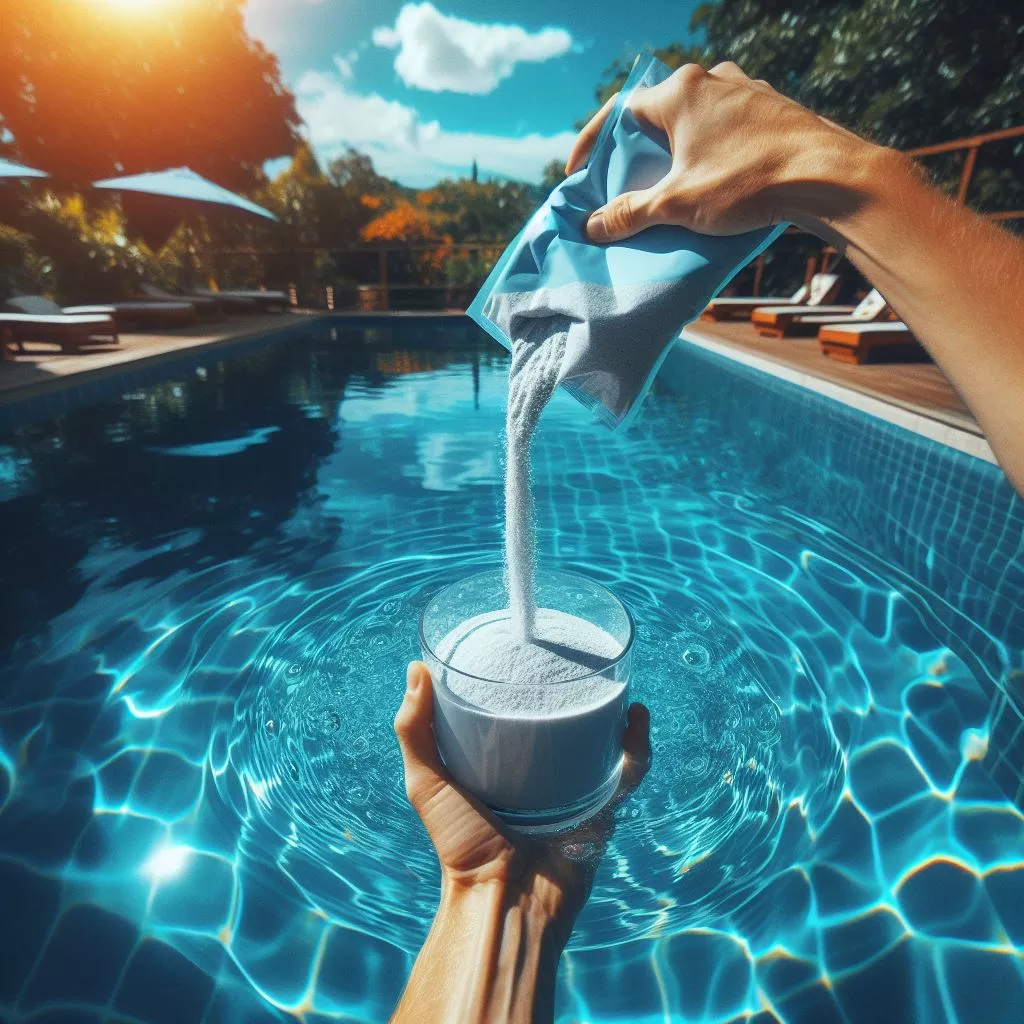Achieving and maintaining a pristine swimming pool involves addressing the presence of impurities effectively. Flocculants, a key component in pool maintenance, play a vital role in precipitating impurities for easier removal. In this comprehensive guide, we will explore the process of cleaning up swimming pools after the application of flocculants, providing insights into efficient methods to ensure a clear and inviting swimming environment.

Understanding Flocculants
Flocculants are chemicals designed to induce the coagulation and subsequent settling of suspended particles in pool water. This process facilitates the removal of impurities, enhancing water clarity. Common flocculants include aluminum sulfate, polymers, and clarifiers. Understanding the function of flocculants is fundamental to implementing effective cleanup strategies.
Determining Flocculant Dosage
The success of the flocculation process relies on the appropriate dosage of flocculants. Pool owners should carefully calculate the dosage based on pool size, water conditions, and the type of flocculant used. Overdosing or underdosing can impact the efficiency of impurity removal, emphasizing the importance of precise measurement.
Observing Flocculation and Settling
After the addition of flocculants, pool owners should observe the flocculation and settling process. Flocculants work by causing suspended particles to clump together, forming larger masses that settle to the pool floor. Patiently observing this process allows pool owners to gauge the effectiveness of the flocculant and determine the optimal time to proceed with the cleanup.
Filtration and Backwashing
The next step in cleaning up the pool involves running the filtration system. Flocculated particles settle at the pool bottom, and the filtration system captures them. Regular backwashing of the filter is essential to expel accumulated debris and maintain optimal filtration efficiency. This step helps remove finer particles that may not have settled during the flocculation process.
Skimming and Surface Cleaning
While the filtration system is at work, skimming the pool surface and manually removing larger debris is crucial. A skimmer net is effective in capturing floating impurities, leaves, or other particles that may be present on the water’s surface. This initial skimming process contributes to a cleaner pool environment.
Brushing and Vacuuming
Brushing the pool surfaces and vacuuming the pool floor are integral to the cleanup process. Flocculated particles may adhere to pool walls or steps, and brushing helps dislodge them for easier removal. Vacuuming ensures the thorough elimination of settled impurities, leaving the pool water exceptionally clear.
Multiple Filtration Cycles
For extensive cleanup, multiple filtration cycles may be necessary. Running the filtration system through several cycles ensures that suspended particles are continuously captured and removed. This step is particularly beneficial for addressing persistent impurity issues and achieving optimal water clarity.
Water Testing and Chemical Adjustment
Post-flocculation cleanup, conducting water tests is essential to maintain balanced pool chemistry. Testing parameters such as pH, alkalinity, and sanitizer levels helps identify any imbalances that could contribute to impurity buildup. Prompt adjustments can be made to prevent future issues and maintain water quality.
Clarifier Addition for Finishing Touch
As a finishing touch, adding a pool clarifier can enhance water clarity further. Clarifiers help to coalesce small particles into larger ones, aiding the filtration process. This additional step ensures that the pool water achieves a sparkling clarity that is visually appealing.
Regular Maintenance Practices
Implementing regular maintenance practices is key to preventing future impurity issues. This includes routine skimming, brushing, and vacuuming, as well as ongoing water testing. Consistent maintenance efforts contribute to sustained water clarity and a more enjoyable swimming experience.
Consideration of Environmental Impact
Pool owners should consider the environmental impact of their cleanup efforts. Choosing eco-friendly flocculants and clarifiers aligns with sustainable practices, minimizing the ecological footprint associated with pool maintenance.
Consultation with Pool Professionals
For complex cleanup scenarios or persistent impurity challenges, seeking consultation with pool maintenance professionals is advisable. These experts can conduct a thorough assessment, recommend targeted solutions, and provide guidance on long-term preventive measures.
Conclusion
In conclusion, cleaning up swimming pools after the application of flocculants involves a systematic approach, from observing flocculation to multiple filtration cycles and regular maintenance practices. Understanding the role of flocculants, precise dosing, and careful observation of the flocculation process are crucial steps. Combined with efficient filtration, skimming, brushing, and vacuuming, these strategies contribute to achieving and maintaining a clear and inviting swimming environment. Regular water testing, chemical adjustments, and consideration of environmental impact further enhance the overall effectiveness of the cleanup process, ensuring that pool owners can enjoy a sparkling and well-maintained pool for years to come.
